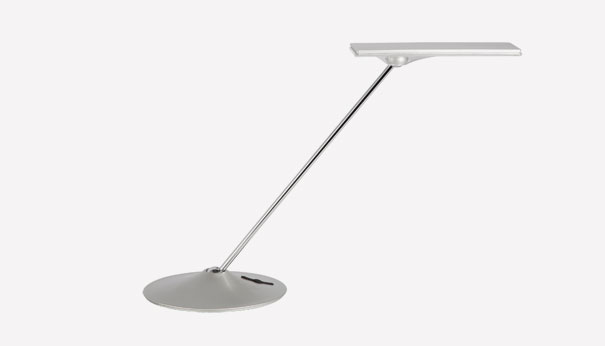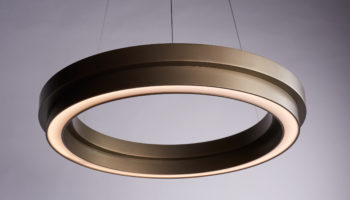At #NeoCon10: Humanscale Has Their Eyes on the Horizon of LED Technology
There’s quite a case to be made for light as the single most important component of a space. Just think about any poorly lit room or–even worse–any room with the drab and draining glare of overhead fluorescents, and then think about how depressed it made you feel. In other words, there’s a broad swath of truth to the cliche about “seeing things in a new light.” If, for instance, you were to swap out your dinosaur of an incandescent goose neck for Humanscale‘s new Horizon LED Task Light, debuting on Monday at NeoCon10, your nefarious workplace nook would instantaneously transform into a rapturous respite bathed in an even Elyssian glow.
Horizon. Designed by Humanscale.
Perhaps that’s overstating the case, but Horizon definitely deserves some hyperbolic adulation. The new task lamp, designed by Peter Stathis and Michael McCoy, aspires to the exquisite refinement of burgeoning LED technology. The duo began by recognizing LED’s commonplace shortcomings: “poor, bluish-colored light quality, odd-shaped illumination footprints, and multiple distracting shadows on the work surface.” The solution to these deleterious defects lies in Horizon’s Thin Wave Technology, wherein multiple high-intensity LEDs are interwoven among polycarbonate and optical films. The technology has a flattening and even-ing effect on light dispersal, resulting in a “broad, rectangular plane of even illumination that appears to float above the desktop.”
While overcoming some traditional problems with LED technology, Horizon yet profits from its high energy efficiency and long life. The lamp requires less than 11 watts of power and boasts a lifespan range of 50,000 to 60,000 hours (that’s 25 to 30 years of use assuming a daily 9 to 5 grind). And like its auspicious antecedent, the Diffrient Task Light, which drew similar acclaim at NeoCon09, Horizon has a captivating aesthetic. Its streamlined rectangular head perches atop a slim cylindrical shaft which finds purchase in a wafer-thin circular base. The trio of components is joined via spherical joints, facilitating easy adjustment. Though, given Horizon’s illuminating refinements, the gnawing compulsion to make said adjustments might just be a creature of the past: “Horizon offers intuitive positioning-adjustment is achieved by simply moving the light to the desired position-although its incredible illumination footprint provides light where it's needed with little to no adjustment.”





Leave a Reply